Related Information
Safety Switches in Modern Furnace Installations: A Complete GuideCombustion Air Requirements for Furnace Installation: Essential Guide
Drain Requirements for High-Efficiency Furnaces: A Complete Guide
Furnace Wiring Guide: Step-by-Step Installation Process
Choosing the Right Oil Tank for Your Furnace
Electrical Circuit Requirements for Furnace Installation
Furnace Efficiency: Single-Speed vs. Variable-Speed Blowers
Preparing for Portland's Winter: Furnace Installation Guide
How to Choose the Best HVAC Contractors in Portland
Obtaining Installation Permits in Portland: Your Easy Guide
Need Help?
Not sure what you need? We’re here to help—no pressure, no jargon, just clear, friendly advice to find the best solution for your home.
Expert Gas Line Installation and Repair Services
“Efficiency Heating & Cooling offers expert gas line installation services that ensure safety and reliability for your home or business. We provide comprehensive solutions, including gas line repair, gas piping installation, and propane gas line installation, tailored to meet your needs.”
Gas Line Installation: A Comprehensive Guide for Portland Homeowners
Gas line installation is super important for homes in Portland. It makes sure you have safe and reliable energy. Whether you’re looking at natural gas or propane, knowing how the installation works can help keep your home safe and efficient.
Understanding the Importance of Gas Line Installation
Installing gas piping the right way is key for safety and efficiency. When experts do it correctly, gas lines give you a reliable source of energy for heating systems, stoves, and water heaters. Here’s why professional installation is a must:
- Safety: Badly installed gas lines can cause leaks and dangerous situations.
- Efficiency: Good installations lower energy waste, which means lower bills.
- Compliance: Licensed contractors make sure everything follows local rules.
Using quality HVAC gas services can make your home more comfortable and boost its value.
Types of Gas Lines and Their Uses
It’s good to know the different types of gas lines so you can pick what’s best for your home:
- Natural Gas Lines: Common in residential areas; they’re cost-effective and easy to find in cities.
- Propane Gas Lines: Great for rural areas where natural gas isn’t available; they need special storage tanks.
Also, sometimes you might need underground gas piping depending on your property layout. This helps keep things safe while still delivering fuel effectively.
Signs You Need a New Gas Line Installation
You need to watch out for signs that tell you it’s time to replace or install new gas lines. Check for:
- Strange smells like rotten eggs that could mean leaks
- Frequent repairs needed on old pipes
- Rust or visible damage on current lines
- Appliances not working well
If you see any of these problems, call a professional right away for emergency repairs or maintenance checks.
The Benefits of Professional Gas Line Installation Services
Hiring licensed contractors comes with many benefits beyond just following rules:
- Expertise: Professionals know how to keep everything safe during installations.
- Quality Work: Skilled workers do the job right so systems last longer.
Choosing experienced local services helps ensure high standards without risking safety.
Common Questions About Gas Line Installations
Homeowners often wonder about a few things related to installations:
- What should I expect during the installation process?
- You’ll likely start with an initial talk followed by an assessment before work begins.
- How much do new installations usually cost?
- Prices vary based on location and size needs, so getting quotes from several companies is smart.
- Are there differences between residential vs commercial setups?
- Yes! Commercial places usually need larger systems because they use more gas than homes.
This guide helps Portland homeowners understand what to expect from installing gas lines, making sure they know how to stay safe and save money too!
Gas Line Installation Services in Portland, OR
Residential Gas Line Installation: Safety and Efficiency for Your Home
Residential gas line installation is really important. It helps your home run safely and efficiently. When you have natural gas lines set up right, you can power key appliances like stoves, water heaters, and heaters. Here are some things to keep in mind:
- Safety First: Always follow safe gas line practices. Use good materials and stick to local rules.
- Professional Installation: Hire licensed pros to make sure your gas appliance installation meets safety standards.
- Emergency Gas Service: If there’s a leak or problem, quick access to emergency services is key to keeping everyone safe.
Investing in good residential gas line installations lets homeowners enjoy efficient energy use while keeping their homes safe.
Commercial Gas Line Installation: Reliable Solutions for Businesses
For businesses in Portland, commercial gas line installation means reliable solutions that fit their needs. Using natural gas well can save money in the long run. Here are a few important points:
- Energy-Efficient Heating Solutions: Many businesses use energy-efficient heating powered by natural gas. This cuts costs and helps the environment too.
- Licensed Contractors: Working with licensed contractors ensures all rules are followed and you can trust the quality of the work.
- Local Gas Services: Getting help from local experts means faster responses when something goes wrong.
Investing in commercial gas utility installations helps businesses run smoothly while boosting efficiency.
Replacing Gas Lines: Expert Repair and Replacement Services
Replacing old or damaged gas lines is key for safety and performance. Whether using trenchless methods or traditional ones, expert repair services keep disruption low during replacements. Here are some things to think about:
- Trenchless Gas Line Installation: This way means less digging, so new pipes can be put in without messing up your yard much.
- Emergency Repairs Available: Quick help is super important if there’s a leak or failure; fast repairs protect lives and property.
- Underground Piping Expertise: Professionals know how to deal with underground piping challenges safely.
By focusing on good replacement procedures, both homeowners and business owners can keep safe while improving energy use with updated systems.
From Initial Assessment to Final Connection: A Step-by-Step Overview
Gas line installation is super important for homes and businesses. It helps deliver natural gas or propane for heating, cooking, and more. Here’s a simple look at the steps in this process.
Initial Consultation and Site Assessment
The first step is to meet with licensed gas contractors. They will check your property to see what you need based on safety rules. Here are some things they look at:
- Existing Infrastructure: They look at what’s already there to make the best plan.
- Safety Practices: These experts know safe gas line practices to keep everyone safe.
- Local Gas Services: Knowing local services helps them meet all requirements quickly.
This step is important because it helps catch any problems early.
Planning and Design of Gas Line Installation
Next, they start planning. This means creating a smart layout for the new gas lines while thinking about energy-efficient heating solutions. Key points include:
- HVAC Gas Services Integration: They ensure the new lines work well with your heating and cooling systems.
- Underground Gas Piping Considerations: If they need to put pipes underground, careful planning makes sure everything stays neat and safe.
A good design means better performance and safety.
Obtaining Necessary Permits and Regulations Compliance
Before any work can start, getting permits is a must. In Portland, there are specific rules about gas line installations. This involves:
- Understanding Local Codes: Each area has its own set of rules that must be followed.
- Permit Applications: Licensed contractors help you apply for permits without delays.
This step is vital because it makes sure everything follows the law, which keeps people safe.
Installation Process for Gas Lines
Installing gas lines can happen in different ways depending on where you are. One method is trenchless gas line installation. This way reduces digging in yards or driveways while still giving reliable connections for natural gas installations. The usual steps include:
- Marking where utility lines are.
- Installing pipes using modern methods like horizontal directional drilling when needed.
- Connecting pipelines properly throughout your property.
Each step follows strict rules to ensure safety and durability.
Testing and Inspection of Installed Gas Lines
Once the installation is done, testing is key before turning anything on. Experts do thorough inspections focusing on:
- Gas Leak Detection: They use special tools to find leaks right after installing.
- Regular Maintenance Inspections: Setting up routine checks after installation keeps everything safe over time.
These actions make sure newly installed lines work well without risks.
Final Connection to Utility Supply
The last part is connecting your new pipeline to the utility supply system—this needs careful work since it affects how homes or businesses get power for appliances like heaters.
Sometimes, if issues come up due to weather or other problems, emergency repairs might be needed so users can get back on track quickly while keeping everything safe!
Choosing Efficiency Heating & Cooling for Your Gas Line Needs
If you need gas line installation, it’s important to pick the right provider. At Efficiency Heating & Cooling, we are experts in residential and commercial gas line installations. Our licensed gas contractors know how to safely handle all kinds of gas piping. They ensure everything follows local rules. Whether you want a new installation or need emergency gas service, our local gas services will help you quickly.
Why Choose Efficiency Heating & Cooling? Experience and Expertise
Efficiency Heating & Cooling is a trusted name for HVAC gas services. Our licensed gas contractors have years of experience with natural gas installation and propane gas line installation. We care about doing high-quality work while keeping safety first.
Here’s what we offer:
- Residential Gas Line Installation: We make sure your home has safe access to natural or propane gases.
- Commercial Gas Line Installation: We understand bigger projects and provide reliable systems for businesses.
By choosing us, you get quality service that puts your needs first.
Portland Gas Line Installation Regulations & Permits
In Portland, OR, it’s key to know the local regulations for natural gas line installations. Following these rules keeps your property safe and meets legal standards.
Before starting any work on your project:
- Permits: Get the necessary permits from city authorities.
- Regulations: Learn about state guidelines for materials used in installations.
- Inspections: Expect inspections at different stages of your project by local officials.
Staying on top of these steps can help avoid delays and make the process smoother.
Gas Line Safety & Maintenance
Gas Leak Detection and Prevention: Ensuring Your Family’s Safety
Gas leaks are dangerous for homes and families. Detecting them early keeps everyone safe. Regular gas line safety inspections can help find problems before they get worse.
To keep gas leaks away, here are some safe gas line practices:
- Install Carbon Monoxide Detectors: These devices alert you if harmful gases are present.
- Regular Inspections: Schedule yearly checks for your residential or commercial gas lines.
- Know the Signs: Pay attention to smells like rotten eggs, hissing sounds near pipes, or dead plants over underground lines.
In emergencies, reliable emergency gas services can respond quickly and reduce risks.
Regular Gas Line Maintenance: Extending the Life of Your System
Taking care of your gas system is key to making it last longer. This means regular checks by licensed gas contractors trained in both natural and propane systems.
Key maintenance tasks include:
- Replacing Worn Lines: Pipes can rust or wear out over time. Replacing them on time helps prevent leaks.
- Underground Gas Piping Checks: Inspect buried pipes to avoid hidden damage that could cause dangers.
- HVAC Gas Services: Combine HVAC upkeep with your gas line care to ensure everything runs well.
By sticking to regular maintenance, homeowners save money on repairs and boost safety.
Importance of Routine Inspections
Regular inspections help keep your natural gas system safe and efficient. A well-planned gas system meets local codes and provides energy-efficient heating solutions in homes.
During an inspection, professionals check connections, valves, and pressure levels. They make sure everything works correctly.
Skipping routine inspections might lead to higher energy bills due to inefficiencies or even serious safety issues from unnoticed problems in the system.
Signs You Need a Gas Line Inspection
Look out for signs that show you need a full inspection to stay safe:
- Unexplained high utility bills
- Sulfur smells around appliances
- Visible damage on pipes
If you notice any warning signs or have had emergency repairs, reach out to local gas services for quick assessments.
Best Practices for Safe Gas Usage
Using propane and natural gas safely is super important for home safety. Here are some best practices:
- Proper Ventilation: Make sure areas with gases are well-ventilated.
- Avoid DIY Repairs: Always call professionals for installations or repairs; doing it yourself can be risky.
- Educate Everyone: Teach household members how to spot signs of danger related to their fuel sources—whether propane or natural gases—so they know what to do in emergencies.
Following these tips will keep your home safe all year round and give peace of mind about fuel safety at home.
Contact Efficiency Heating & Cooling for a Free Estimate
Schedule Service: Convenient Booking Options
At Efficiency Heating & Cooling, we know that having a safe gas line is important for your home or business. Our licensed gas contractors are here to help you with reliable service. You can easily schedule an appointment that works best for you.
- Residential Gas Line Installation: If you need to upgrade or put in new lines, our team will make sure it’s done safely and meets all rules.
- Commercial Gas Line Installation: We also help businesses with specific needs, giving solid solutions that fit commercial standards.
- Emergency Gas Service: Got a problem with your gas line after hours? Our emergency service is ready to help when you need it the most.
- Local Gas Services: Being part of the Portland community means we are always here for our neighbors.
It’s simple to book your service with us. Just choose a time that fits your schedule!
Contact Us: Get in Touch with Our Team of Experts
Do you have questions about natural gas installation or propane gas line installation? Feel free to reach out! Our team is ready to help you understand safe practices for HVAC gas services and energy-efficient heating solutions. Here’s how we can assist:
- Natural Gas Installation: We follow safety guidelines and work hard to make sure your installation runs efficiently.
- Propane Gas Line Installation: Learn about the benefits of propane as a heating source.
- Safe Gas Line Practices: Safety is key in all our work. We prioritize this in every installation and maintenance job.
You can contact us by phone or email anytime. We’re excited to provide expert advice just for you!
Frequently Asked Questions (FAQs) About Gas Line Installation
1. What is gas line maintenance?
Gas line maintenance involves regular checks and repairs. This ensures your gas lines function safely and efficiently.
2. How often should I have a gas line inspection?
Schedule a gas line inspection at least once a year. This helps identify potential issues early.
3. What are gas line upgrades?
Gas line upgrades involve replacing old or damaged pipes with new ones. This improves safety and efficiency in your system.
4. Why is gas leak detection important?
Gas leak detection prevents dangerous situations. Early detection can save lives and property from harm.
5. What does a licensed gas contractor do?
A licensed gas contractor installs, maintains, and repairs gas lines. They ensure all work meets local regulations and safety standards.
6. What is trenchless gas line installation?
Trenchless gas line installation reduces digging during pipe replacement. This method minimizes disruption to your property.
7. Where can I find local gas services?
Search online or ask for recommendations in your community for reliable local gas services.
Additional Points on Gas Line Services
- Energy-Efficient Heating Solutions: Modern systems offer better fuel use.
- Emergency Gas Repairs: Quick help is available for unexpected issues.
- Gas Fitting Expertise: Trained professionals ensure secure connections.
- Gas System Design: Customized designs maximize efficiency and safety.
- Underground Gas Piping: Proper installation avoids damage and hazards.
- Service Areas: Efficiency Heating & Cooling serves Portland, Tigard, Gresham, Multnomah County, Washington County, Clackamas County, and more.
With these services, Efficiency Heating & Cooling supports safe and efficient energy use in your home or business.
Real Reviews
Our Primary Services
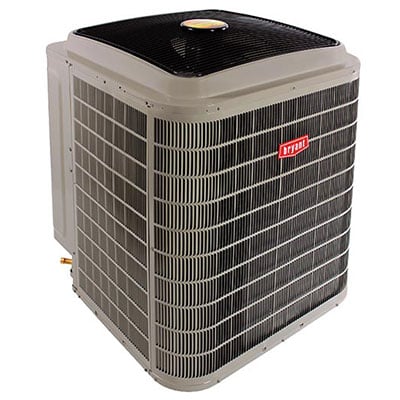
Heat Pump Services
Optimize your home’s energy efficiency with our expert heat pump installation, maintenance, and repair services.
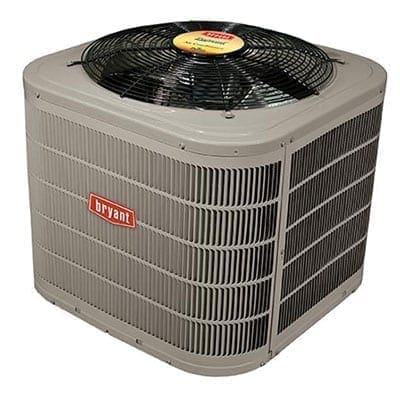
AC Services
Stay cool and comfortable with our professional air conditioner installation, maintenance, and repair services.
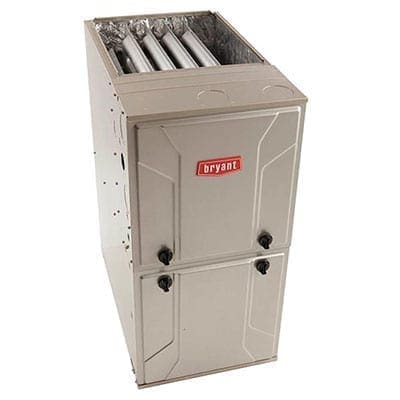
Furnace Services
Ensure your home stays warm with our reliable furnace installation, maintenance, and repair services.
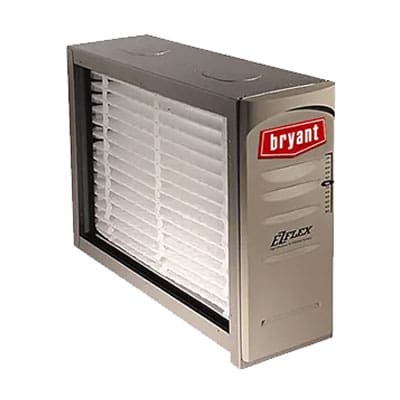
Air Quality Services
Enhance your home’s air quality with our expert air filtration and purification system installation, maintenance, and repairs.
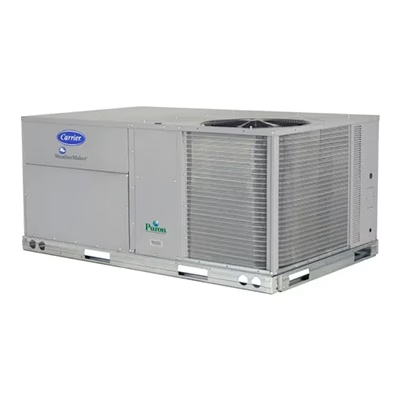
Commercial Services
Maximize your building’s energy efficiency with our expert heat pump installation, maintenance, and repair services.
Service Details
Ensure optimal climate control and energy efficiency in your commercial spaces with our comprehensive HVAC services. We specialize in the installation, maintenance, and repair of heating, ventilation, and air conditioning systems. Our experienced technicians provide tailored solutions to meet the unique needs of your business, ensuring a comfortable and productive environment year-round.
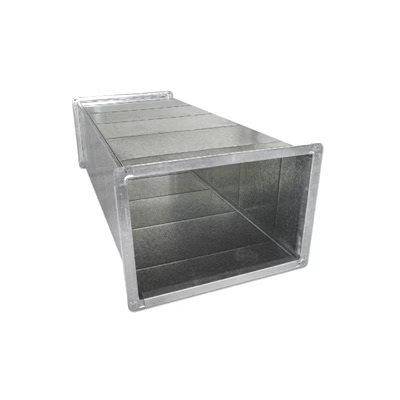
Ductwork Services
Improve your home or building’s energy efficiency with our expert ductwork installation, and repair services.
Not Seeing What You Need?
Contact Us For Customized HVAC
Solutions or Any HVAC Questions
Serving the Greater Portland Area
Our Service Area


